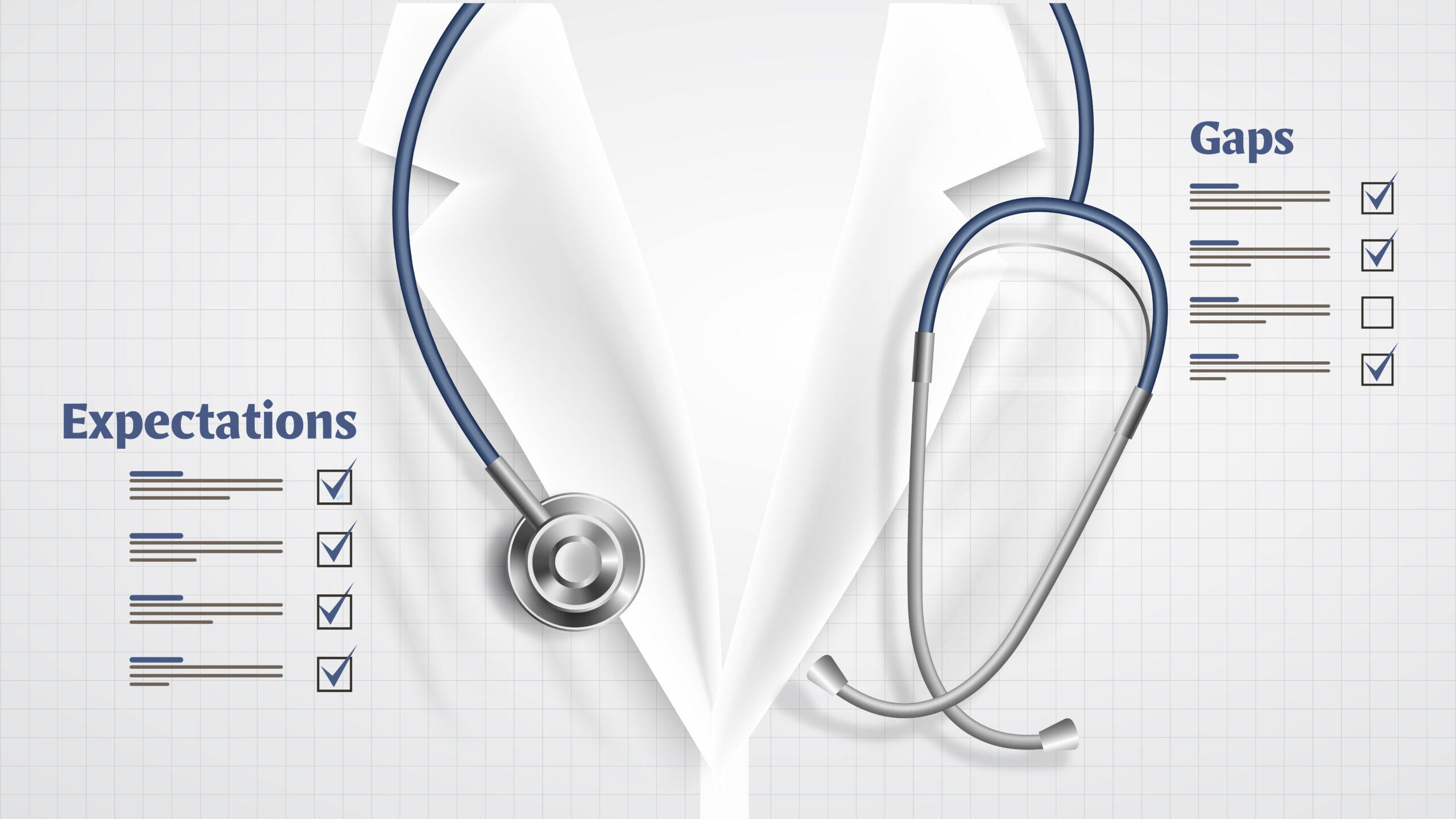Health Sector Reforms: Expectations and Gaps
Farhin Islam
The health sector of Bangladesh is stricken with the lack of adequate health infrastructure and management inefficiencies. The national budget allocation for the health sector has been poor for decades. The Bangladesh Health Sector Reform Commission, chaired by Professor AK Azad Khan, submitted its final report to the Interim Government in May 2025. The report contains several recommendations, aiming to transform the healthcare system of Bangladesh to be more equitable, efficient, and people-centered. The reform commission’s report outlines what should be done but lacks specific timelines, responsible agencies, or step-by-step strategies for implementation.
The World Health Organization (WHO) recommends that governments allocate at least 5% of their Gross Domestic Product (GDP) to the health sector in order to achieve Universal Health Coverage (UHC) and meet basic health needs sustainably. The report by the reform commission reemphasized this percentage in their recommendation. However, in Bangladesh’s fiscal year 2025–26 national budget, the health sector has been allocated 0.67% of GDP. It is significantly below WHO’s recommendation and also well below the South Asian average of 2.2%. As a result, over 70% of total health expenditure is out-of-pocket, one of the highest in the world and significantly above the WHO recommendation of 20%, pushing many households into poverty due to medical costs. The commission also suggested dedicating 15% of the national budget to the sector, which is currently around 5%.
As a lower-middle-income country, free or subsidized primary healthcare services are a dire need for the citizens of Bangladesh. The commission urged free primary healthcare for all citizens as a constitutional right. However, the report did not propose a detailed and efficient financing strategy to implement this in the context of the current economic condition of Bangladesh. A proper fiscal space analysis could be appropriate in this regard. The scopes for external financing and donor transitions in post-LDC graduation also demand detailed discussion. The possible public-private integration should also be explored, and price regulation frameworks for diagnostics or private hospital services should be built to reduce the out-of-pocket costs.
The rate of Annual Development Program (ADP) implementation is also not satisfactory, hovering around 70% for the last five fiscal years, according to Implementation Monitoring and Evaluation Division (IMED) data. Therefore, the low allocation is a problem in the health sector, but it is coupled with the low implementation rate. This combination severely undermines service delivery, infrastructure growth, and public trust in the system. Funds are returned unspent while health indicators remain poor. A tracking of health budget utilization is missing. The returned funds could be used to purchase resources that are currently in short supply, such as ICU and ventilators, skilled technicians, and many more that we witnessed during an unprecedented event like COVID-19. This could not be done due to the lack of efficient financial management by the authorities and the bureaucratic obstacles.
Upon receiving the report from the reform commission, the Chief Advisor of the Government Prof. Dr Muhammad Yunus stressed the need for decentralization in the health services. However, decentralization of the health sector alone is not possible when the country is highly centralized administratively. To decentralize the system, the commission proposed establishing 11 regional health authorities at the divisional level. But these authorities should not only ensure doctors’ availability in their designated stations, but also ensure the posting of other skilled healthcare professionals and availability of active medical equipments adequately to support doctors and to make the regional health systems fully functional.
The commission recommended institutionalization for long-term planning and accountability in the health sector through legal reforms and new legislation. But laws are in vain if they are not implemented. The present laws, although they have shortcomings, are not implemented strongly. The commission did not show pathways for how these laws could be implemented properly, ensuring the protection of citizens and the accountability of relevant bodies. The commission also proposed four national health support networks- National Pharmacy Network, National Diagnosis Laboratory Network, National Blood Supply Network, and National Ambulance Network. This will be a remarkable initiative if maintained properly. The authorities should make sure that this does not remain in black and white only.
One of the major recommendations was the digitization of the health system, but there is no concrete plan for data privacy, cybersecurity, and digital infrastructure investment. The lack of digital literacy, especially among marginalized people, is also overlooked in such a plan.
Doctors are the backbone of the health system, but other support staff are similarly necessary for functioning efficiently. WHO recommended that the doctor-to-nurse-to-technologist ratio should be 1:3:5. However, in Bangladesh, there are fewer than 0.8 nurses and fewer than 0.05 technologists for each doctor, based on the number of registered doctors and medical technologists in BMDC and registered nurses in BNMC. Therefore, the health sector requires more skilled nurses, medical technologists, and other healthcare professionals. The proposed autonomous body “Bangladesh Health Service” should work on it dedicatedly.
On the other hand, as there should be one doctor per thousand population as suggested by WHO, Bangladesh is in short of thousands of doctors. While some specialist doctors are overwhelmed with patients, some general practitioners are not getting patients they could treat. It is important to understand which patient needs to go where. A proper referral system can evenly distribute the load of patients among tertiary, secondary, and primary healthcare facilities and between senior and junior doctors. The commission recommended establishing secondary- and tertiary-level hospitals in phases at the district level and setting up regional referral hospitals at the divisional level. If this can be done systematically, access to healthcare for all people can be improved. While resolving the shortage of doctors, the newly formed public medical colleges and the private medical colleges should focus on maintaining the quality along with the quantity.
The health sector of Bangladesh showed promising achievements in several indicators in recent decades, such as maternal mortality and immunization. But overall, the health sector in Bangladesh stands at a critical crossroads. Despite decades of policy discussions and repeated reform efforts, the country continues to struggle with chronic underfunding, poor implementation of development programs, and structural inefficiencies. To truly achieve Universal Health Coverage and reduce the overwhelming out-of-pocket health expenditure burden, Bangladesh must urgently align its budgetary priorities with international standards, strengthen health workforce planning, and decentralize services meaningfully. The path forward requires not only policy vision but also political commitment, institutional accountability, and inclusive governance to make quality healthcare accessible to every citizen.
Author’s Biography:

Farhin Islam completed her BSS and MSS in Economics from the University of Dhaka in 2019 and 2020 respectively. She joined as a Research Associate at BIDS in October 2023. Prior to joining here, she was a lecturer at the Dhaka School of Economics. She also worked at the World Bank Group Education Global Practice. Her research interests are in Development Economics, especially in Health and Education economics.


